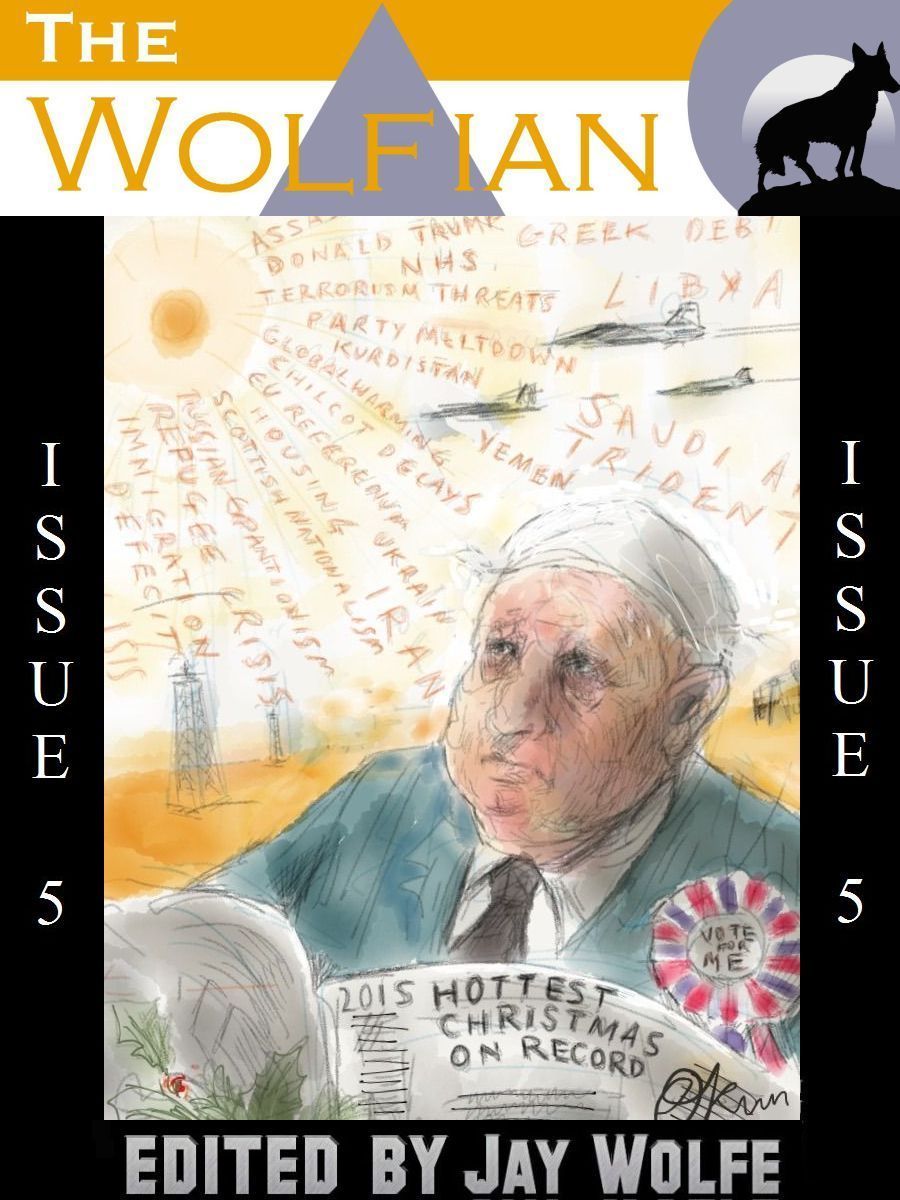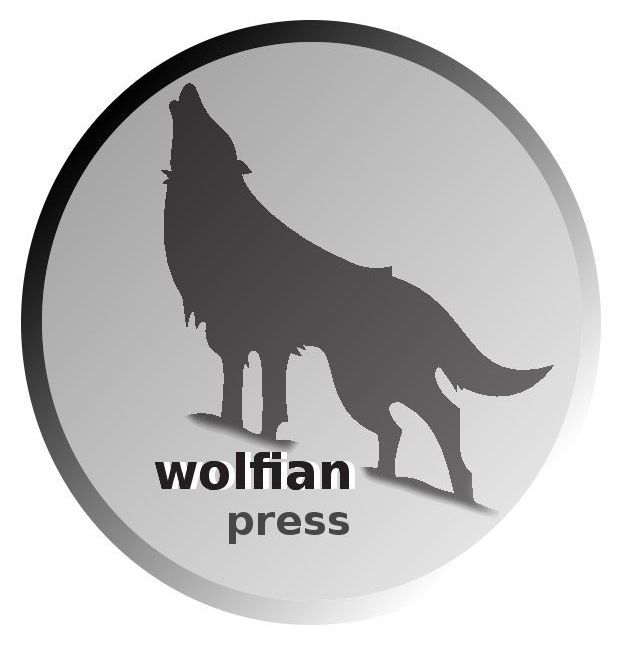Ystalyfera
History and Heritage
Cemeteries - A Losing Battle
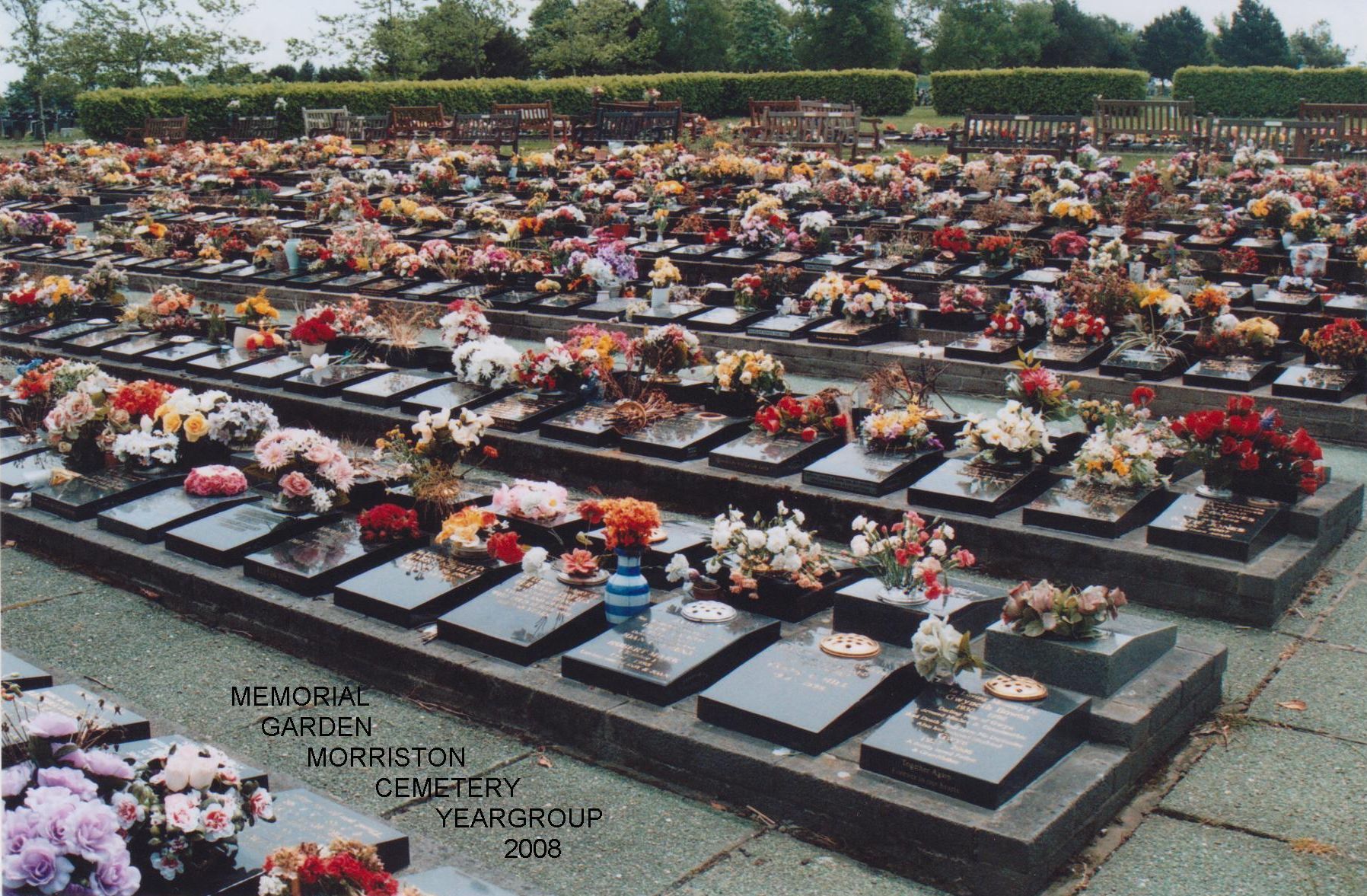
The craft of the monumental mason or sculptor of memorial head stones has been described as a dying art. The larger upright stone which would mark the treasured spot may no longer be affordable or with an increase in the number of cremations and the practice in many areas of specially laid out graveyards and cemeteries demand for the traditional headstone is not as great as formerly.
View full-sized
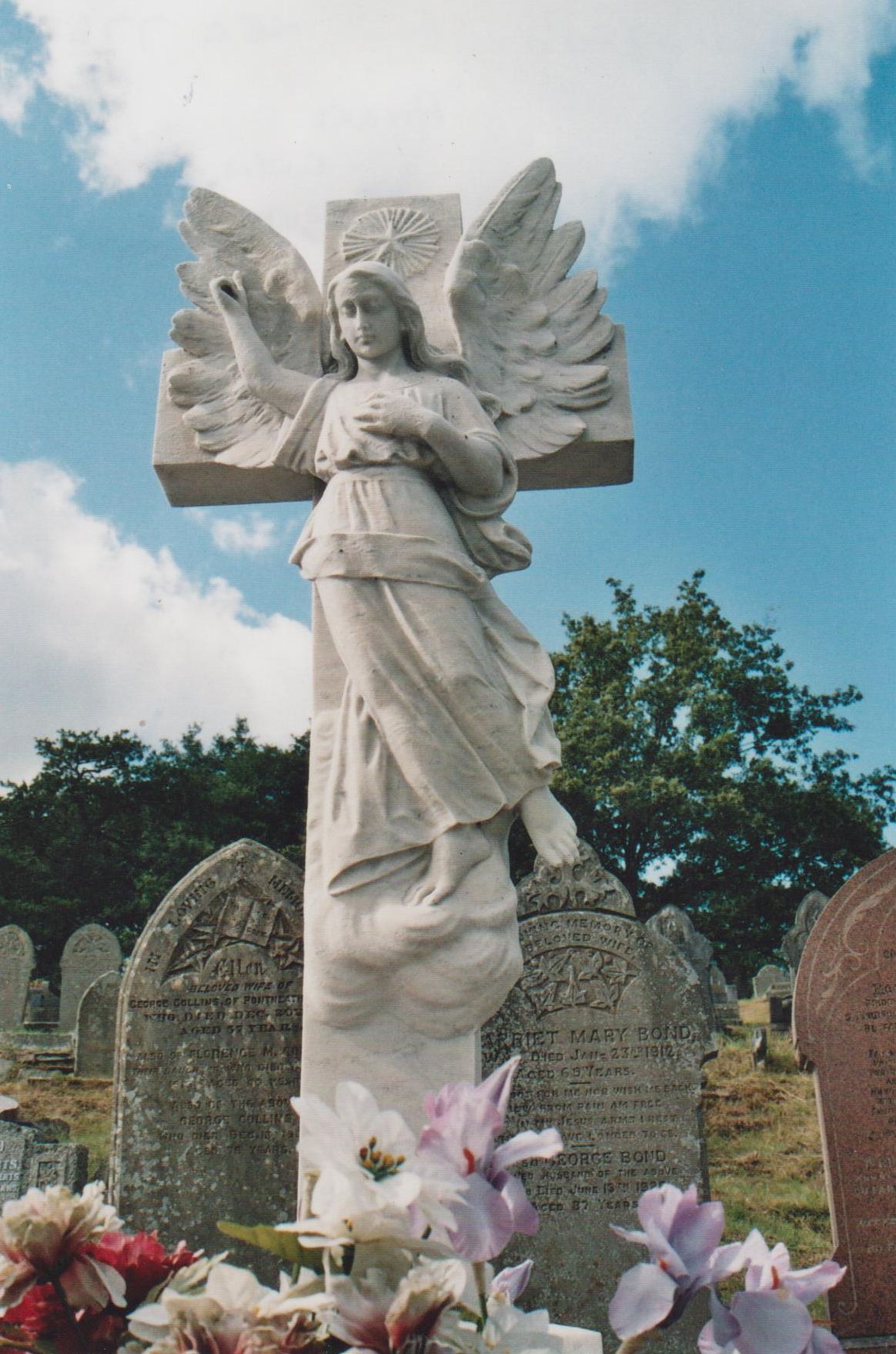
Nevertheless, that little plot remains sacred to so many and people still wish to surround and personalize the site, to mark the resting places of loved ones.
The idea of marking burial places with a tombstone or headstone has long been established and throughout the years craftsmen have been designing suitable tributes in stone. Some of their work has to be seen to be fully appreciated. It is a craft which demands perfection and attention to even the smallest of detail. Evidence of the success achieved over many years can be seen in church yards and cemeteries every where.
View full-sized
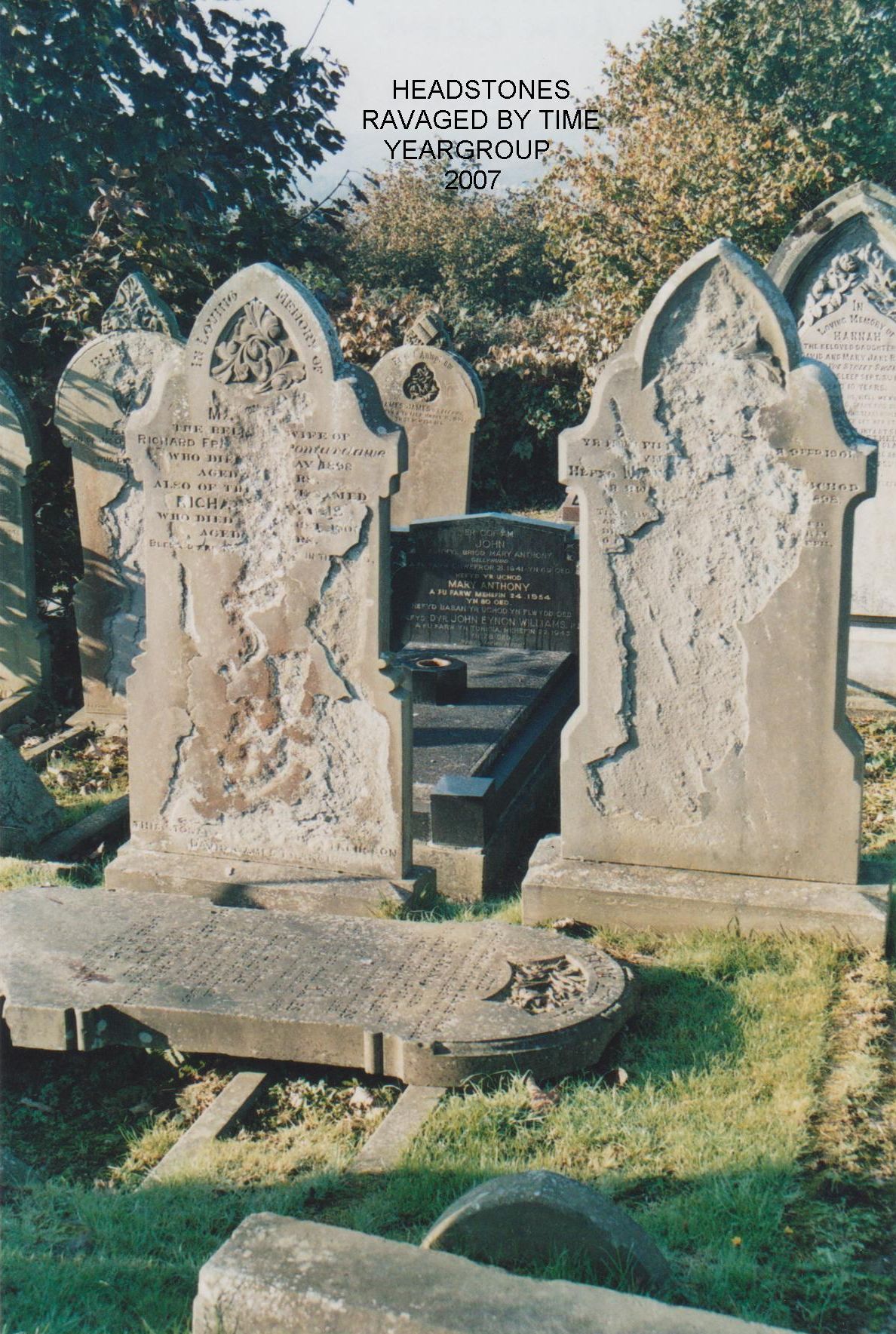
All headstones are owned and are the responsibility of the grave owner or their next of kin. The problem arising today however is the up keep of these grand monuments, when loved ones have moved away or when families have died out and there is no one left to take care of the plots.
However, if a memorial is found to be in an unsafe condition, councils have the obligation of making them safe. In the year 2000, following an accident where by a 6 year old child in North Yorkshire was crushed to death after a five-foot high headstone fell on top of him, the council inspected 16,000 gravestones and 6,000 memorials were laid flat because they were found to be unstable.
View full-sized
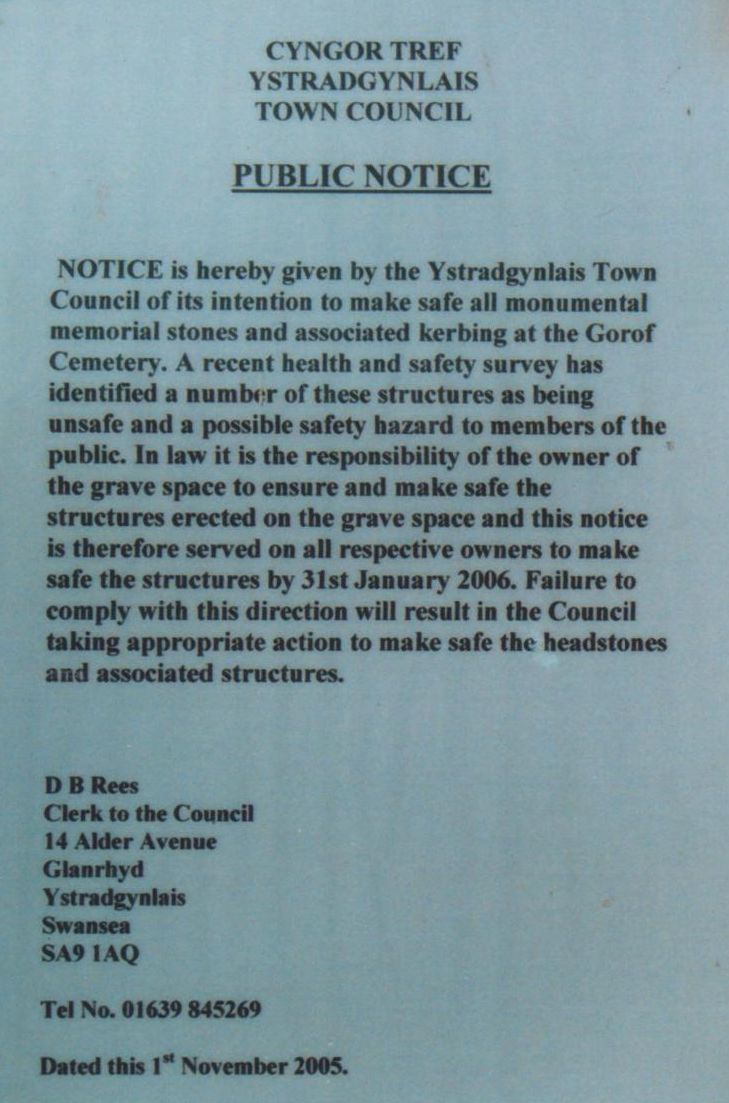
One would expect time to take its toll on some of the older memorials but modern headstones also represent a real risk. Reasons why they can be unsafe include their foundations not being as deep as older gravestones but modern memorials are supposed to have anchors of concrete or stainless steel to keep them upright. All too often a headstone is laid on a thin concrete base, which offers little protection against subsidence and according to some experts this cement can give way in as little as a year. A Health and Safety Commission report states that from 1999 to 2004 there were three deaths and 18 other serious accidents from unstable memorials in cemeteries. Headstone fatigue is rarely a problem for the Commonwealth War Graves Commission.
It boasts immaculate cemeteries around the world because the memorials are planted deep into the earth, which is no longer disturbed by fresh digging.
View full-sized
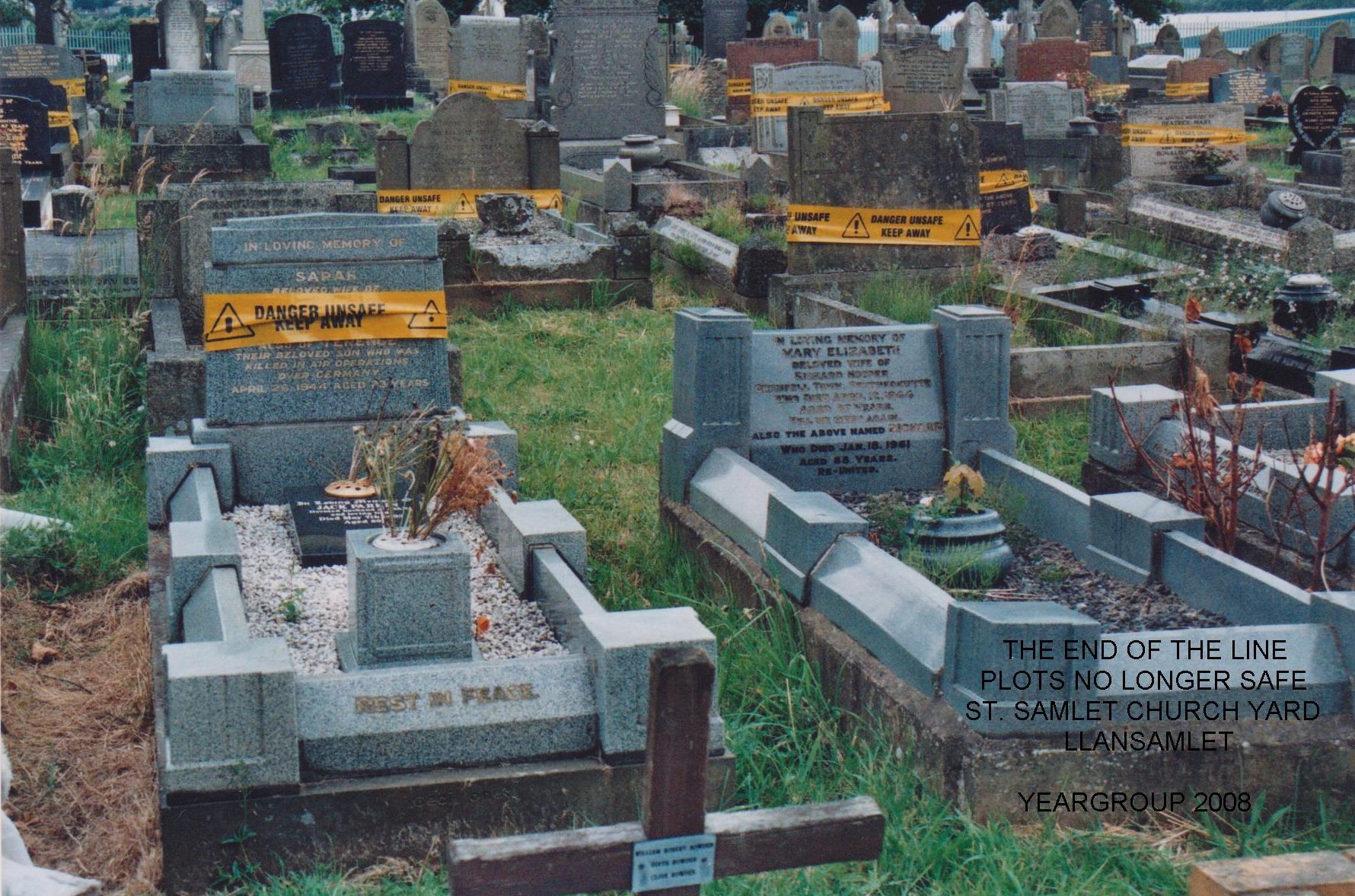
Then about 8 years ago, following the headstone inspections some were inevitably identified as being in a potentially dangerous condition. It was about the time I was visiting many cemeteries throughout the Tawe Valley in search of Remembrance Graves and I was quite concerned to see the cemeteries becoming full of gravestones marked with a yellow tape stating: DANGER UNSAFE - KEEP AWAY.
Notices were pinned up to explain this sudden transformation and as I understood it, Councils use the "topple test" to assess safety (British Gravestone Standard 8415, requires that a stone remains upright when a lateral force of 35kg is applied to its apex) and if a gravestone moves it could be laid down. It appears that this decision was taken because those that manage cemeteries run the risk of being sued if there is an accident but from my point of view when a headstone is laid face down I was loosing a vital piece of historical data and in cases where burial books had not recorded the location of persons buried this became a personal race to trace as many as possible before the information was lost for good. In fact about a third of gravestones, the most common memorial since the 1950s, are estimated to have failed safety checks and about 10% of Victorian memorials
View full-sized

Unsafe cemeteries were not the only problems I faced in my quest to identify and record the inscriptions of the three local cemeteries namely Pantteg, Holy Trinity and Alltygrug (Ystalyfera). Dwindling congregations are now a reality across Wales, even a recent headline "Chapels are being lost at the rate of one a week and church leader's fear that hundreds more may have to shut their doors," comes as no surprise. It would appear we have other things to occupy our time on a Sunday. The high cost of up keep is presenting impossible demands on an ever decreasing number of worshippers and the effects are showing not only in the general appearance of the buildings but in the state of the graveyards. Mother Nature soon spreads her mantle over in animate objects and after one or two seasons of uncontrolled growth many graves are in danger of being permanently hidden from view.
View full-sized
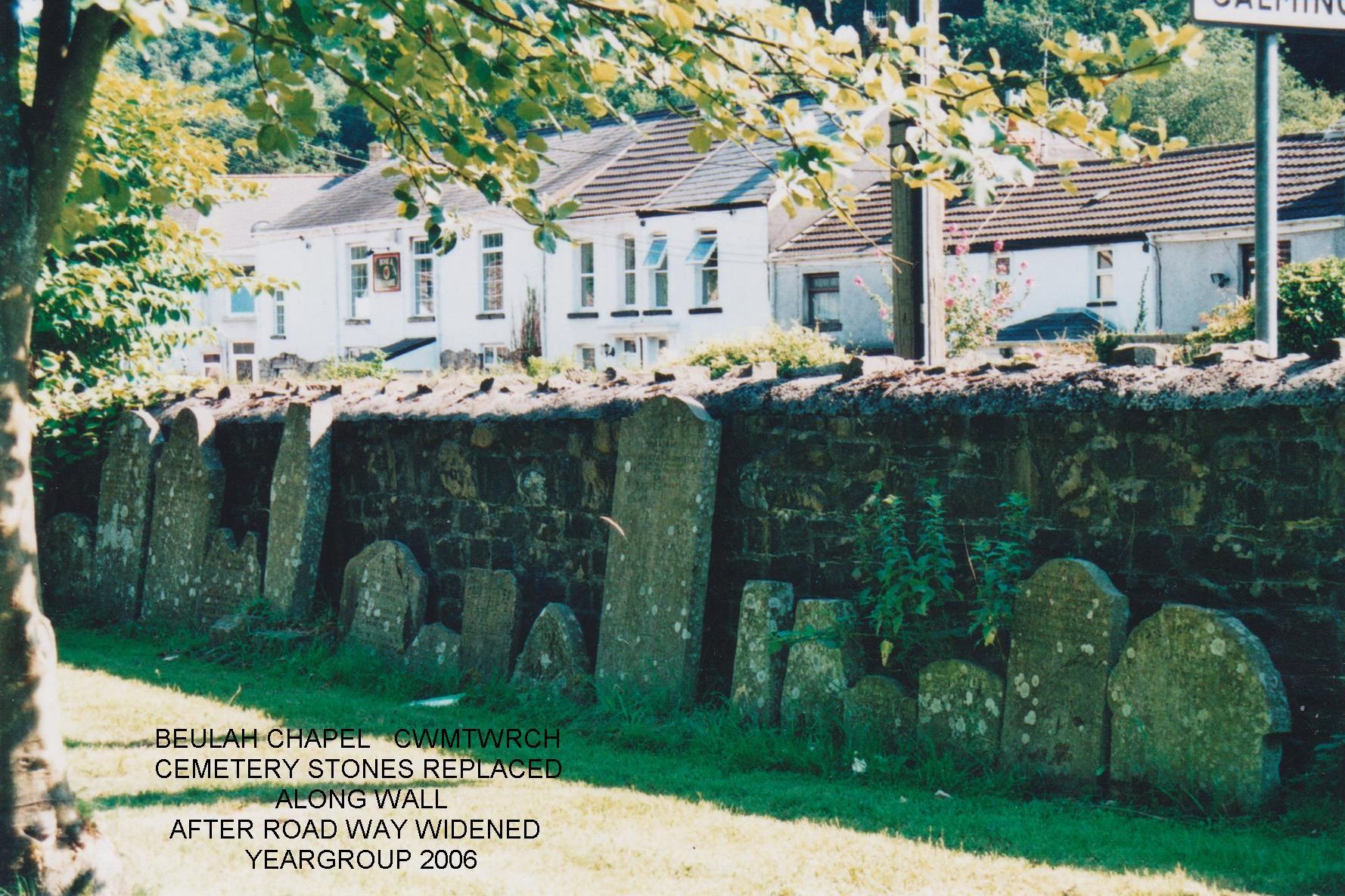
One of the most frustrating problems I have, is the ever growing list of "Unknown" either because the family did not have a name entered on the grave or because the initial inscription has long since faded and where the records have either been lost in time or especially with the very early burials, the location was never written down, I am afraid that those laid to rest there shall only be remembered by God in The Book Of Life.
This fact also hit home when I visited a derelict chapel, over in Gowerton and giving a wide berth to the building which gave the impression that it was about to collapse on anyone even entering the grounds, I discovered a marker placed in the centre of the rear cemetery. It read "Here lie the remains from the unidentified graves in this churchyard transferred September 1989 to permit the provision of a footpath on the main road." This Chapel is not the only one to move grave sites as I have found many plots within recent years that have no doubt caused an obstruction and the only way to deal with the problem was to move the stones.
View full-sized
So the craft of the monumental mason may be described as a dying art but for the many local cemeteries that I have visited over the last decade it appears to be the cemeteries themselves that are dying. Whether due to spiraling costs for the upkeep of existing buildings and grounds, or worse dwindling congregations and subsequent closures of the places of worship, the once sacred areas where the living could come and pass a few quiet moments with the departed is no easy task when one finds several years of untamed wilderness prepared to rip us to shreds if we dare to venture past the gates.
HOLY TRINITY CHURCHYARD and PANTTEG CEMETERY Ystalyfera have no records of the exact location of where the deceased person was buried. Surnames and dates of burial were recorded but not the actual plot. In fact there are no named plots in either cemetery and in the case of Pantteg Cemetery a section of the Grave yard was altered in 1959 to widen the road and the exhumed were reburied, in some cases in other cemeteries.
When YEARGROUP became aware of this problem almost a decade ago, it took on the task of plotting out the two above named cemeteries which later also included Alltygrug, the burial ground for St. David's Church in Ystalyfera.
Holy Trinity was divided into 5 sections or plots
Plot One has 1-25 Graves
Plot Two has 1-26 Graves
Plot THREE had been damaged years ago when the trees had fell and crushed many of the grave stones and because the lines were out of alignment I divided the plot into 3 sections
Plot Three A 1-43 Graves
Plot Three B 1-41 Graves
Plot Three C 1-63 Graves
Plot Four 1-58 Graves
Plot Five 1-85 Graves
These sections are found around where Holy Trinity once stood, on the top half of the cemetery.
Also there are 3 groups of graves which would have been in closer proximity to the church
Plot A Graves A-H
Plot B Graves A-C
Plot C Graves A-F
A separate plot which although has been provided with a gate on Church Road, it has been sealed and therefore this section is no longer safe and access is extremely difficult. I used to climb over said gate but with the height of the Japanese Knotweed it was really a fruitless exercise, thus most of my work had to be undertaken in Winter and may I say frozen fingers where not the best aid for copying down headstone data.
This section is Plot 6 but unfortunately there is no ordered structure to the burials and it was impossible to ascertain any lines, therefore each Grave has been given its unique burial number ie Plot 06 Davies 940. By this number the data base shows it is the grave of Ann Davies died 1890 & her husband John Davies died 1897.
From the top sections there is access down stone steps to a wooden gate and a wooden walkway which leads to the bottom part of the cemetery and two more sections, Plot Seven and Plot Eight. Again these are two more sections which have suffered serious damage from neglect and because of Natures desire to retain a strangle hold over any thing in its path, the older grave stones have not put up much of a fight, in fact many have been destroyed by this constant push of wilderness as year after year the trees have surrounded and even grown up through the graves.
The same method has been used for these two plots. By using the unique burial number graves that can be still identified have been put onto the list.
In 2004 the Memorial Garden was constructed on the site of the demolished Church and the Plot has been named as Memorial Garden Ashes
After the cemetery had been plotted I photographed each grave and where it looked as though someone could have been buried there I also included a photograph and unfortunately had to list those as "Unknown".
All inscriptions had then to be written down, which meant each grave had to be cleared of undergrowth at least once to make sure I did not miss any ones name.
PANTTEG
Luckily for me the graves in Pantteg are for the most part in a straight line so I only had to give them a Row and Grave Number
There are 36 rows, each row having a different number of graves but there are 383 graves in total and quite a few pieces of headstones scattered around the edges of the cemetery.
Again not all are readable and there are no unique numbers available as there are no records.
My database is being built by various sources of information not least the death and funeral reports found in the Llais newspaper. Obviously later members of one family could not be buried in Holy Trinity so they were laid to rest in Alltygrug which I then also photographed in order to continue the family files and included in my data base.
All three cemeteries are a work in progress and certainly for the next few years I can see myself still unraveling the mystery of why Man never thought to keep a record of where he laid his ancestors and why he did not take better care of that little plot of sacred ground
Ystalyfera - South Wales
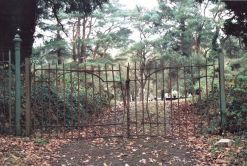
- Cemetery of Holy Trinity
- Cemetery of Pantteg Chapel
- Alltygrug Cemetery
- New Bethel Cemetery, Alltygrug
- Godrergraig Cemetery
- Lost Landmarks of Ystalyfera
- Ystalyfera Then and Now
- Ystalyfera Fair
- Our Feathered Friends
- Pantteg Murder
- Bronchitis Valley
- Ystalyfera Cemeteries
- Storm Damage
- Cemetery Damage
- A Sacred Promise
- Historian Noel Watkins
- Yan Boogie - Eileen Baker
- Dangerous Bridges
- Interesting Snippets
Email Yeargroup:
yeargroup@hotmail.co.uk
Email Wolfian Design:
webdesign@wolfianpress.com

Click the cover to purchase the paperback
How To Write Alternate History is a series of articles by Grey Wolf, examining subjects such as the identity of man, whether man makes the weather, how the everyday in an alternate world is going to be changed and what names for music, vehicles, weapons etc would be different.



















